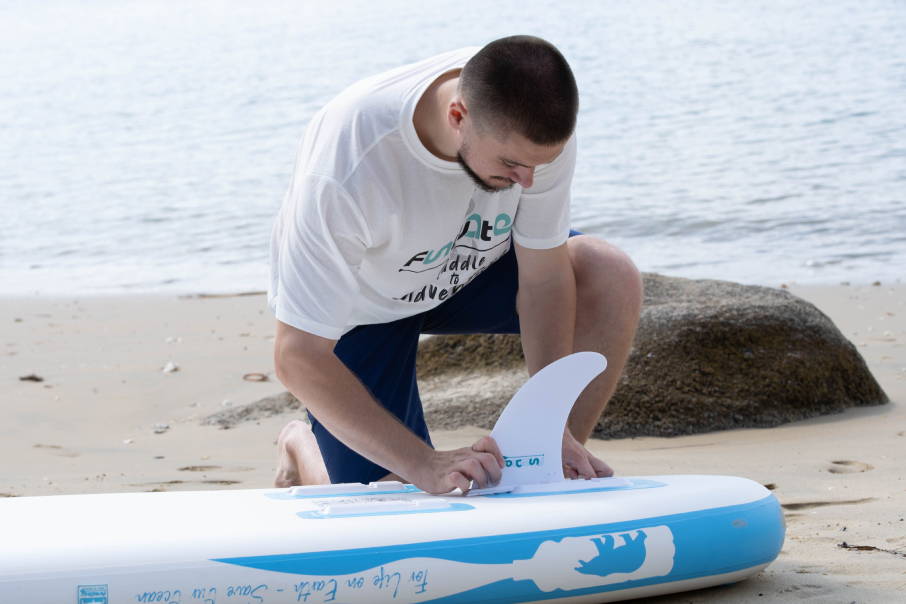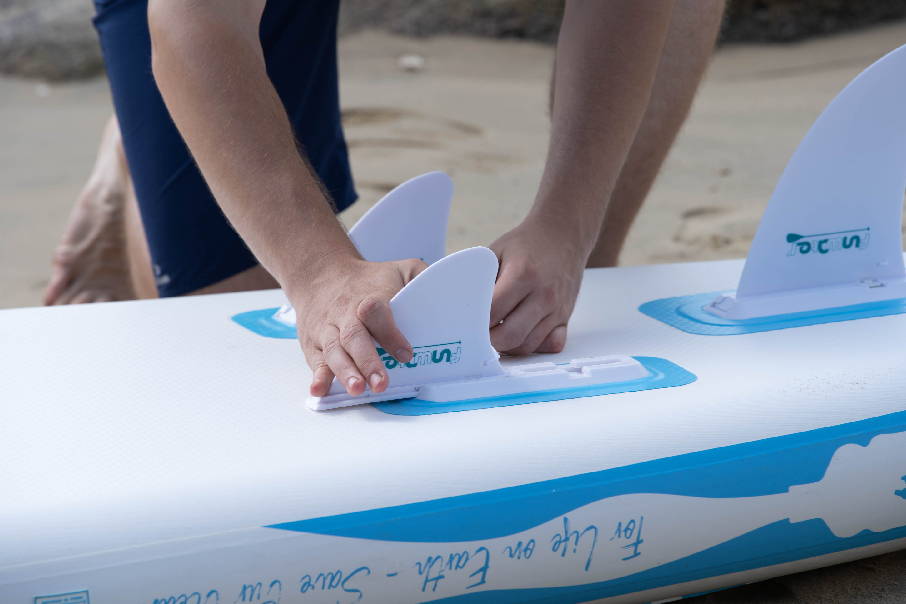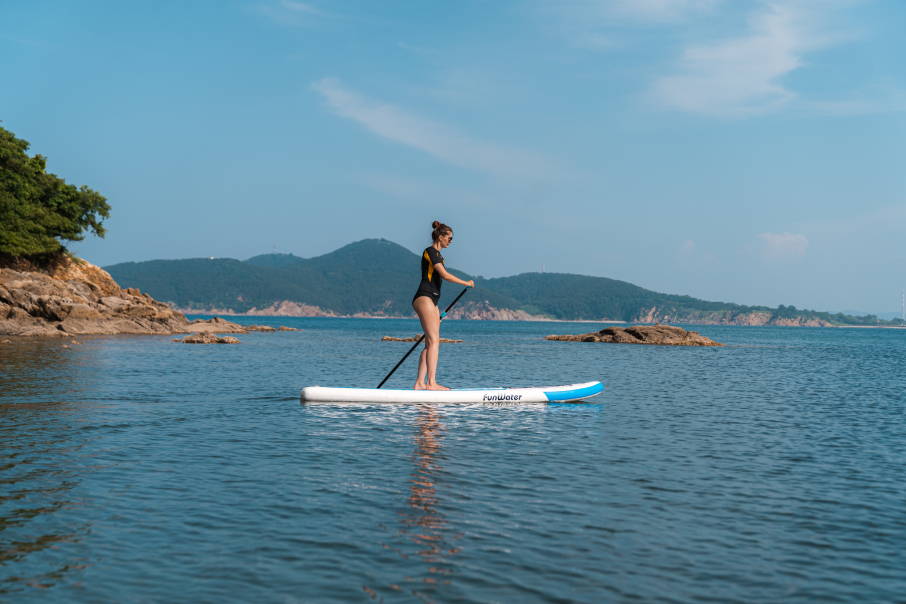The main fin on a Funwater paddle board provides straight-line tracking and stability, making it easier to paddle long distances in Canadian lakes and calm coastal waters.


Paddle Board Fins in Canada: Main vs. Side Fins and How to Use Them
When it comes to paddleboarding in Canada’s lakes, rivers, and coastal waters, the fin setup on your stand up paddle board (SUP) plays a big role in how your paddle board performs. Whether you’re cruising across calm lakes in Ontario, exploring tidal waters in British Columbia, or paddling along Quebec’s scenic rivers, knowing how to use your SUP main fin and side fins can make your experience smoother and more enjoyable.
The paddle board main fin, also known as the center fin, is the largest fin on a stand up paddle board. It’s usually located in the center of the tail and is responsible for:
Tracking: Helping your inflatable paddle board go straight with minimal side-to-side wobble.
Stability: Providing good balance, especially for beginner paddlers and kids.
Control: Making it easier to paddle in a straight line on lakes or calm waters.
In Canada, the main fin is ideal for large, flatwater paddling—think Muskoka Lakes, Lake Louise, or Nova Scotia bays—where smooth tracking and stability are key.

The paddle board Side fins, sometimes called “thruster” or “side bite” fins, are smaller fins located on either side of the main fin. Their key benefits include:
Maneuverability: Better for turning and handling quick movements.
Grip in Choppy Waters: Helps your inflatable paddle board hold its line in waves or currents.
Surfing or River Riding: Essential for small surf zones or moving rivers where agility is needed.
Side fins are great for Canada’s west coast surf spots, Ottawa River currents, or windy lake conditions.

Flatwater Lakes (Ontario, Quebec, Alberta): Use the main fin only for smooth tracking and less drag.
Choppy or Windy Lakes (Great Lakes or Prairies): Add main + side fins setup for extra stability in light chop.
Rivers or Small Surf (BC, Nova Scotia): Use main + side fins or a 3-fin thruster setup for better turning and grip.
Shallow Rivers or Rocky Areas: Consider using shorter fins to avoid hitting rocks or riverbeds.

With the right paddle board main and side fin setup, your Funwater inflatable paddle board will be ready for any Canadian adventure—from peaceful Ontario lakes to BC’s coastal challenges. Understanding your SUP fins means better performance, safer paddling, and more fun on the water.
Subscribe
Sign up to our newsletter to receive news, reviews, discounts and deals...
Funwater Blogs
Frequently Asked Questions
What is the purpose of the main fin on a Funwater paddle board?
The main fin on a Funwater paddle board provides straight-line tracking and stability, making it easier to paddle long distances in Canadian lakes and calm coastal waters.
Why should I use side fins on an inflatable paddle board in Canada?
Side fins on an inflatable paddle board improve maneuverability and control, which is helpful in rivers, choppier lakes, or during turns while paddleboarding in Canada.
Can I remove the side fins on my stand up paddle board for better performance?
Yes, for flatwater or calm lake paddling, removing the side fins on your stand up paddle board reduces drag and improves speed on your SUP board.
How do I choose the right fin setup for Canadian paddleboarding conditions?
For calm lakes and long paddles, use only the main fin. For rivers, bays, or choppier waters, use both main and side fins on your Funwater paddle board.
Do all Funwater inflatable paddle boards come with removable fins?
Most Funwater inflatable paddle boards include a removable main fin and optional side fins, allowing paddlers in Canada to customize their SUP board for different water conditions.